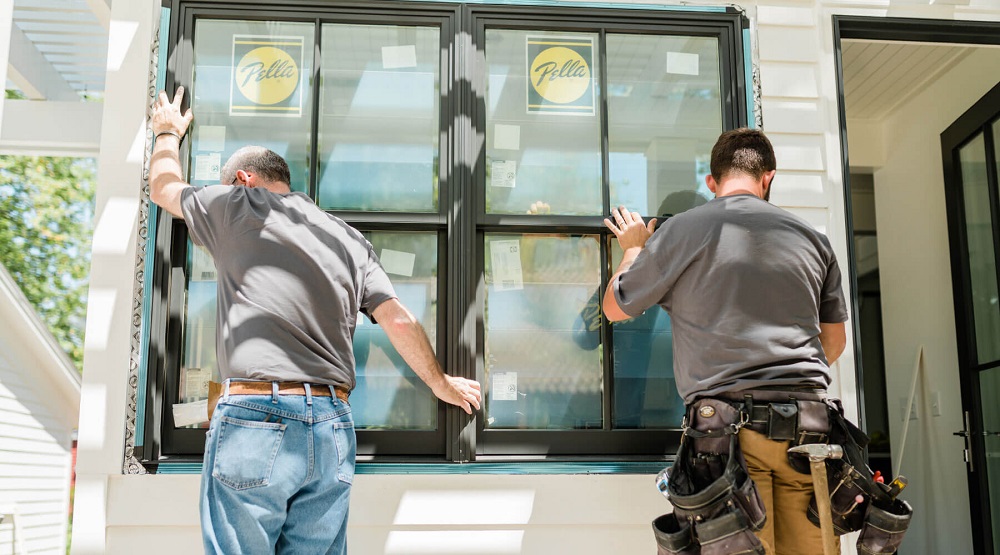Regarding home renovations or new constructions, windows are often an overlooked yet crucial component. They’re more than just a view of the outside world; they’re responsible for controlling the light, heat, and even energy efficiency of your home. Whether you’re dealing with classic wooden frames or modern vinyl windows, knowing your options and how to proceed with window installation can make a big difference in the outcome. This guide will cover everything you need about home window installation.
Types of Windows
Before we dig into the how-to’s and best practices, let’s start by identifying the types of windows you may want to consider:
- Single-Hung Windows: These have one fixed sash and another that moves vertically.
- Double-Hung Windows: Both sashes are operable, providing more flexibility.
- Casement Windows: These are hinged at the side and open outward.
- Sliding Windows: These slide horizontally and are ideal for wide openings.
- Custom Windows: Custom designs might be the best option for unique spaces and creative flair.
Choosing the Right Material
Different materials offer different benefits, from durability to aesthetics to energy efficiency:
- Wood: Offers a timeless look but requires more upkeep.
- Aluminum: Lightweight and durable but not the most energy-efficient.
- Fiberglass: Known for high durability and excellent energy efficiency.
- Vinyl Windows: These are affordable, energy-efficient, and require minimal maintenance, making them increasingly popular.
Consider your home’s architectural style, climate, and budget when selecting materials.
Cost Factors
Budgeting for window installation isn’t just about the price of the window itself. Additional expenses may include:
- Labor: Often calculated by the hour or by the project.
- Materials: From fasteners to caulking, these small items add up.
- Additional Services: Old window removal, frame repairs, or upgrades like adding window films.
- Warranty: A more extended warranty can offer peace of mind but might come at an additional cost.
The Installation Process
Once you’ve made all the preliminary decisions, it’s time to move on to the actual windows installation. This can be broken down into several steps:
- Measurement and Preparation: Accurate measurements are crucial for a seamless installation.
- Removal of Old Windows: Out with the old to make way for the new. This involves removing sashes, frames, and any additional parts.
- Installation: The new windows are secured in place with the help of fasteners and shims.
- Insulation and Sealing: Proper insulation and sealing are essential for energy efficiency.
- Final Checks: Operation locks and seals are all verified for proper function.
Post-Installation Care
Your responsibilities don’t end once the windows are in place. Here’s what to keep in mind for post-installation:
- Cleaning: Use materials compatible with your window type.
- Regular Inspections: Look for signs of wear and tear, which could lead to more significant issues.
- Maintenance: Regular maintenance, like painting or sealing, can extend the lifespan of wooden and custom windows.
The Importance of Hiring Professionals
Window installation is typically not a DIY job unless you have significant experience in construction or carpentry. The process requires specialized skills and tools to ensure the windows are securely installed, properly sealed, and energy-efficient. Hiring professionals who can guarantee their work is often more cost-effective in the long run.
- Expertise: A professional will know how to handle unexpected issues during installation, such as rotting wood frames or uneven wall surfaces.
- Warranty: Most professional installation services offer warranties on their work, providing you with added peace of mind.
- Time-saving: With their experience and expertise, professionals can complete the installation in a fraction of the time it might take an amateur.
Energy Efficiency and Sustainability
In the era of rising energy costs and environmental concerns, the energy efficiency of your windows is not something to overlook. Energy-efficient windows can dramatically reduce heating and cooling costs, making your home more sustainable. Features to look out for include:
- Double or Triple Glazing: Multiple layers of glass with air or gas between them can significantly improve insulation.
- Low-E Glass: This type of glass has a special coating to reflect heat while allowing light to pass through.
- Weatherstripping: Proper sealing can go a long way in preventing air leakage.
Safety Precautions
Safety is critical, especially when replacing old windows or installing large, heavy ones.
- Proper Tools: Ensure you or the professionals have all the necessary tools for the installation.
- Safety Gear: Safety goggles, gloves, and other protective gear should be used during installation.
- Handling: Windows, huge ones, can be heavy and awkward to handle. Always have adequate support to prevent accidents.
Conclusion
Windows plays an integral role in your home’s aesthetic and functional aspects. From choosing a suitable material like vinyl windows to understanding the complexities of custom windows, making informed decisions can contribute significantly to your home’s value and quality of life. The key is to plan carefully, consult with professionals for the actual windows installation, and follow post-installation care guidelines to ensure longevity and performance.
By arming yourself with comprehensive knowledge and professional help, you’re not just installing windows but making a long-term investment in your home.



